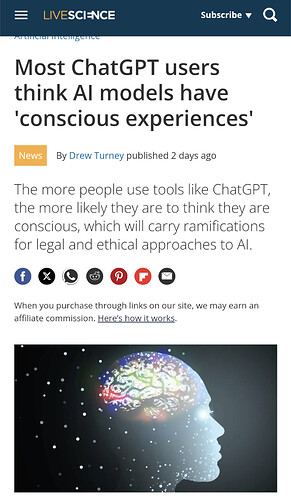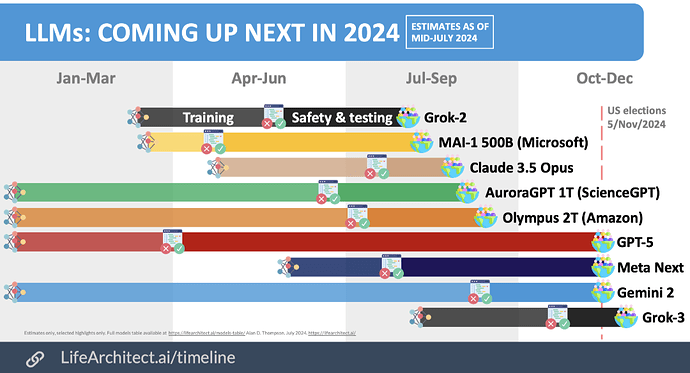Goldman Sachs kom med en tung lunta häromveckan. Meningarna om AI är minst sagt delade bland analytikerna och andra intervjuade, men någon industriell revolution verkar de inte tro på i alla fall, inte inom överskådlig tid.
Som AI-skeptiker tyckte jag intervjun med Jim Covello (sida 10) var väldigt läsvärd, hans uppfattning ligger rätt nära min egen. Covello är en doldis men har viss namnkunnighet inom halvledarindustrin; han kan branschen. Han har mycket svårt att se att det går att få rimlig avkastning på de enorma kostnaderna för LLM:er, och påpekar bland annat att hårdvaran allt hänger på i praktiken är ett oligopol eller på gränsen till ett monopol, kontrollerat av Nvidia och några av deras underleverantörer (främst TSMC och ASML), vilket gör det mycket osannolikt att hårdvaran kommer bli särskilt mycket billigare. Han drar det också ännu längre, och säger bl.a. “[t]he idea that technology typically starts out expensive before becoming cheaper is revisionist history”.
Jag tar mig friheten att citera en del (min fetstil nedan):
Allison Nathan: You haven’t bought into the current generative AI enthusiasm nearly as much as many others. Why is that?
Jim Covello: My main concern is that the substantial cost to develop and run AI technology means that AI applications must solve extremely complex and important problems for enterprises to earn an appropriate return on investment (ROI). We estimate that the AI infrastructure buildout will cost over $1tn in the next several years alone, which includes spending on data centers, utilities, and applications. So, the crucial question is: What $1tn problem will AI solve? Replacing low-wage jobs with tremendously costly technology is basically the polar opposite of the prior technology transitions I’ve witnessed in my thirty years of closely following the tech industry.
Many people attempt to compare AI today to the early days of the internet. But even in its infancy, the internet was a low-cost technology solution that enabled e-commerce to replace costly incumbent solutions. Amazon could sell books at a lower cost than Barnes & Noble because it didn’t have to maintain costly brick-and-mortar locations. Fast forward three decades, and Web 2.0 is still providing cheaper solutions that are disrupting more expensive solutions, such as Uber displacing limousine services. While the question of whether AI technology will ever deliver on the promise many people are excited about today is certainly debatable, the less debatable point is that AI technology is exceptionally expensive, and to justify those costs, the technology must be able to solve complex problems, which it isn’t designed to do.
[…]
Many people seem to believe that AI will be the most important technological invention of their lifetime, but I don’t agree given the extent to which the internet, cell phones, and laptops have fundamentally transformed our daily lives, enabling us to do things never before possible, like make calls, compute and shop from anywhere. Currently, AI has shown the most promise in making existing processes—like coding—more efficient, although estimates of even these efficiency improvements have declined, and the cost of utilizing the technology to solve tasks is much higher than existing methods. For example, we’ve found that AI can update historical data in our company models more quickly than doing so manually, but at six times the cost.
More broadly, people generally substantially overestimate what the technology is capable of today. In our experience, even basic summarization tasks often yield illegible and nonsensical results. This is not a matter of just some tweaks being required here and there; despite its expensive price tag, the technology is nowhere near where it needs to be in order to be useful for even such basic tasks. And I struggle to believe that the technology will ever achieve the cognitive reasoning required to substantially augment or replace human interactions. Humans add the most value to complex tasks by identifying and understanding outliers and nuance in a way that it is difficult to imagine a model trained on historical data would ever be able to do.
Allison Nathan: But wasn’t the transformative potential of the technologies you mentioned difficult to predict early on? So, why are you confident that AI won’t eventually prove to be just as—or even more—transformative?
Jim Covello: The idea that the transformative potential of the internet and smartphones wasn’t understood early on is false. I was a semiconductor analyst when smartphones were first introduced and sat through literally hundreds of presentations in the early 2000s about the future of the smartphone and its functionality, with much of it playing out just as the industry had expected. One example was the integration of GPS into smartphones, which wasn’t yet ready for prime time but was predicted to replace the clunky GPS systems commonly found in rental cars at the time. The roadmap on what other technologies would eventually be able to do also existed at their inception. No comparable roadmap exists today. AI bulls seem to just trust that use cases will proliferate as the technology evolves. But eighteen months after the introduction of generative AI to the world, not one truly transformative—let alone cost-effective—application has been found.
[…]
I place low odds on AI-related revenue expansion because I don’t think the technology is, or will likely be, smart enough to make employees smarter. Even one of the most plausible use cases of AI, improving search functionality, is much more likely to enable employees to find information faster than enable them to find better information. And if AI’s benefits remain largely limited to efficiency improvements, that probably won’t lead to multiple expansion because cost savings just get arbitraged away. If a company can use a robot to improve efficiency, so can the company’s competitors. So, a company won’t be able to charge more or increase margins.
Han rundar av med att säga att han tror att om vi inte ser några riktigt revolutionerande tillämpningar inom 12-18 månader så kan investerarnas tålamod börja tryta. Men han säger också att det är bara att köpa på sig Nvidia och TSMC; de är de enda som verkligen tjänar pengar på detta så länge experimentet pågår. Men om han får fel och vi får en explosion av AI-produkter så är det ändå en bra investering.
Också på tapeten nyligen är detta podcast-avsnitt innehållande ett långt och djuplodande samtal med François Chollet, AI-forskare på Google. Det länkades tidigare i tråden men då endast som lång podcast, men nu finns en transkribering också för folk som hellre läser. Den röda tråden i samtalet är att han är helt övertygad om att AGI inte kan uppnås med LLM:er, eller ens transformer-arkitekturen och deep learning i allmänhet, och han är argumenterar väldigt övertygande för den ståndpunkten. Han förklarar väldigt bra varför LLM:er är som nån som har en formelsamling men har glömt all algebra - de kan t.ex. lösa Caesar-chiffer med 3 eller 5 förflyttningar, för det är såpass vanligt i träningsdatan att de har algoritmen inbyggd, men de kan inte generalisera den till t.ex. 9 förflyttningar. Mycket läsvärt, missa inte, för över en timme in i samtalet kommer t.ex. såna här smockor:
It’s actually really sad that frontier research is no longer being published. If you look back four years ago, everything was just openly shared. All of the state-of-the-art results were published. This is no longer the case.
OpenAI single-handedly changed the game. OpenAI basically set back progress towards AGI by quite a few years, probably like 5-10 years. That’s for two reasons. One is that they caused this complete closing down of frontier research publishing.
But they also triggered this initial burst of hype around LLMs. Now LLMs have sucked the oxygen out of the room. Everyone is just doing LLMs. I see LLMs as more of an off-ramp on the path to AGI actually. All these new resources are actually going to LLMs instead of everything else they could be going to.
If you look further into the past to like 2015 or 2016, there were like a thousand times fewer people doing AI back then. Yet the rate of progress was higher because people were exploring more directions. The world felt more open-ended. You could just go and try. You could have a cool idea of a launch, try it, and get some interesting results. There was this energy. Now everyone is very much doing some variation of the same thing.




